PostTime:2/10/2025
Recently, Viacheslav Papkov (first-year MSc, MER program), Boyan Zhang (Cohort 2022 MER program), Han Su and Haojie Chen (both Cohort 2021 MER program), of Guangdong Technion-Israel Institute of Technology (GTIIT), co-authored with their supervisor, Assoc. Professor Dmitry Pashchenko, to publish a paper titled "Numerical modeling of laminar flow over a porous cylinder under endothermic steam methane reforming reaction" in high-ranking scientific journal: International Journal of Heat and Fluid Flow. The research project spanned approximately six months, allowing ample time for thorough exploration of both theoretical frameworks and practical simulations. This duration facilitated a comprehensive understanding of the intricate relationships between fluid dynamics, heat and mass transfer, and chemical reactions, culminating in findings that are significant for optimizing reactor designs in industrial applications.
From a class problem to a research project
This research originated from deep thinking from the course Computational Methods Dmitry Pashchenko taught spring semester 2023/24 for UG students. When discussing one of the classic problems in this course - numerical solving the Navier-Stokes equations for flow over a cylinder, Assoc. Professor Pashchenko suggested that the students try to solve a more complex problem, namely, the flow over a porous cylinder under endothermic steam methane reforming reaction, prompting an investigation into how the problems of the moderate low efficiencies of current steam methane reforming systems could be optimized through better understanding of flow dynamics.
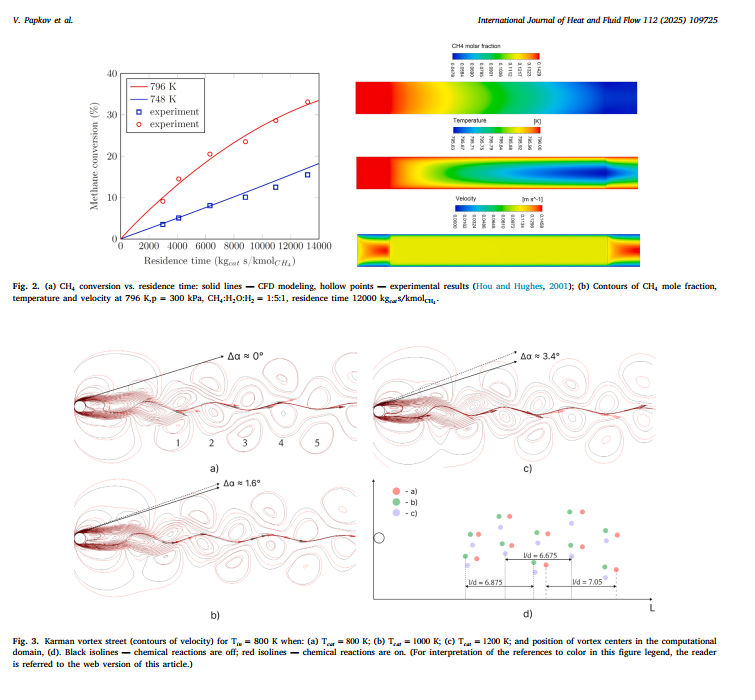
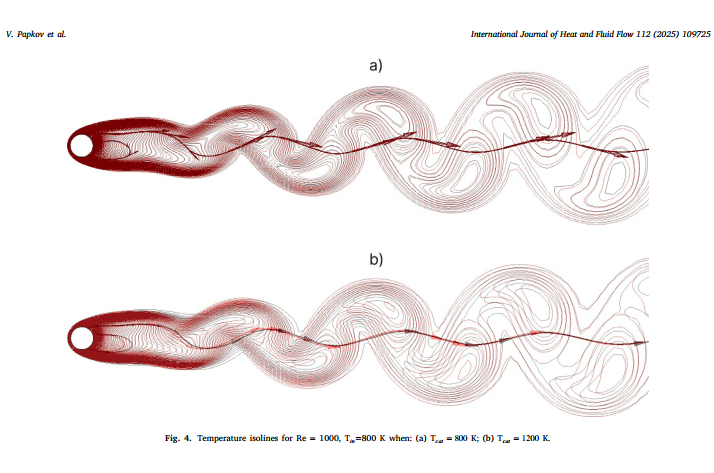
The mentor's suggestion sparked a keen interest among the students. After the problem was formulated and the initial data was determined, the research began and gradually took shape. The team embarked on exploration that focuses on the numerical simulation of laminar flow over a porous cylinder subjected to endothermic steam methane reforming reactions. Utilizing a two-dimensional Reynolds-Averaged Navier-Stokes (RANS) approach, the study aims to elucidate how endothermic chemical reactions influence the Kármán vortex street and the heat transfer coefficient across a spectrum of governing temperatures pertinent to industrial steam methane reforming applications.
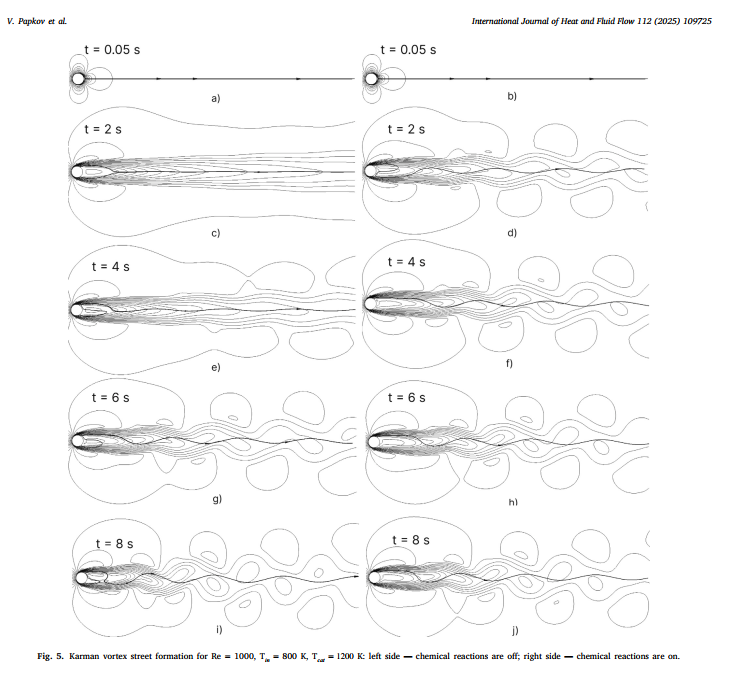
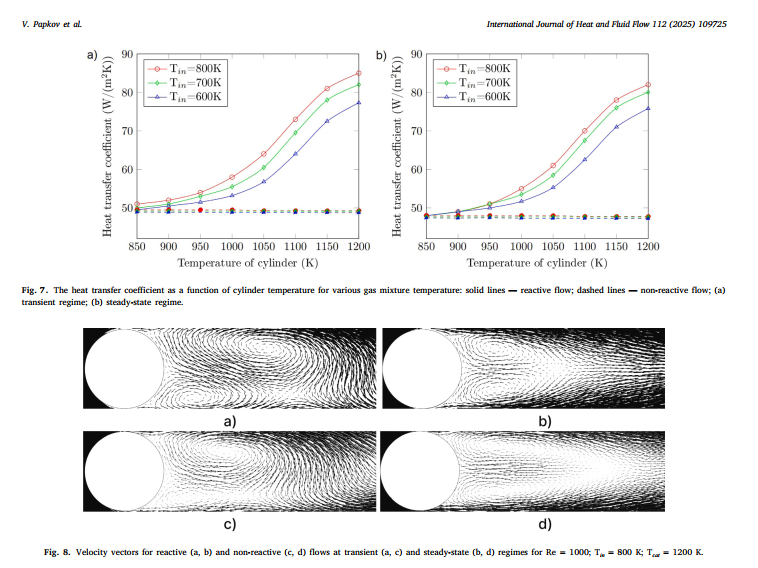
The research begins with a detailed exploration of both transient and steady-state regimes, encompassing reactive and non-reactive flow scenarios. Key findings indicate that steam methane reforming reactions significantly alter the characteristics of the Kármán vortex. Specifically, an increase in the catalytic cylinder temperature correlates with an expansion in the size of the single vortex and an elongation of its periodic length. Notably, at a cylinder temperature of 1200K, the influence of chemical reactions on the Kármán vortex is maximized due to the heightened reaction rates associated with increased temperature.
Visualizations presented in the paper illustrate the formation of Kármán vortices in both reactive and non-reactive flows, providing critical insights into flow dynamics. The analysis emphasizes the heat transfer coefficients on the surface of the cylinder, revealing that endothermic chemical reactions substantially enhance the thermal energy transferred from the surface to the reacting flow. This finding is significant for optimizing reactor designs in industrial applications where efficient heat management is crucial.
From theoretical learning to innovative practice
Three undergraduate students in this research joined Assoc. Professor Pashchenko's laboratory in their sophomore year. “Joining a research group early offers students numerous advantages, including hands-on experience with advanced simulation techniques, research skills and exposure to real-world industrial challenges,” said Assoc. Professor Pashchenko. “This early involvement fosters essential skills such as teamwork, problem-solving, and technical proficiency, which are invaluable for their academic and professional futures.”
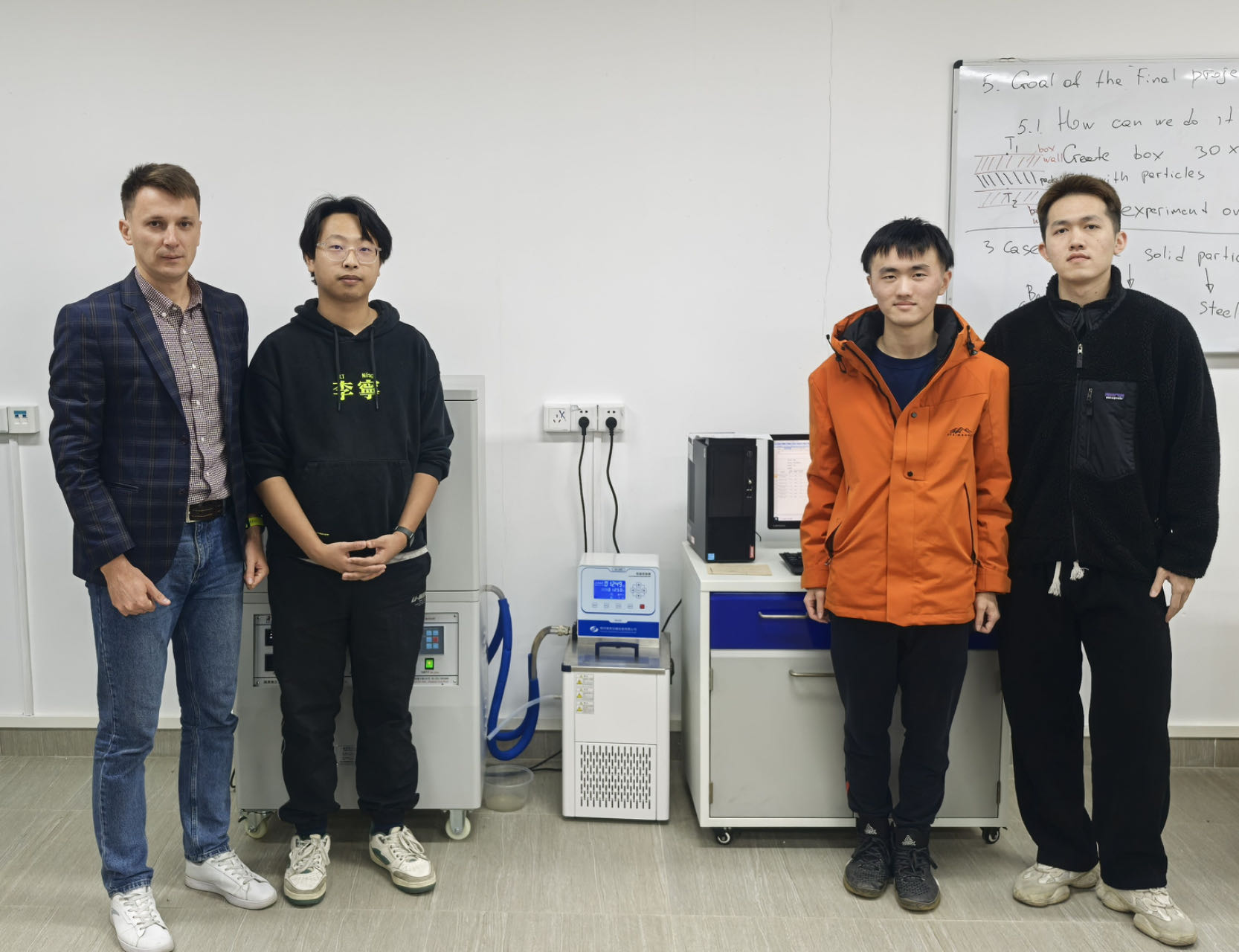
 team photos
team photos
He also highly praised the students' performance. “Throughout this research project, students demonstrated exceptional qualities such as critical thinking, collaboration, and a strong commitment to learning. They engaged actively in simulations and data analysis, showcasing their ability to tackle complex problems and adapt to new methodologies. Their enthusiasm and innovative ideas significantly contributed to the project's progress.”
“The basic knowledge of heat transfer and thermodynamics acquired in our program laid the foundation for this project.”The project allowed Han Su to gain a deeper understanding of the theories he had learned and translate it into research outcomes. Besides, their mentor's guidance helped a lot. "During the summer vacation of my sophomore year, Dmitry guided us on how to learn ANSYS and provided us with many learning materials. When the project started in junior year, we were equipped with rich theoretical knowledge and software skills," added Haojie. "so we didn’t feel lost at the beginning."
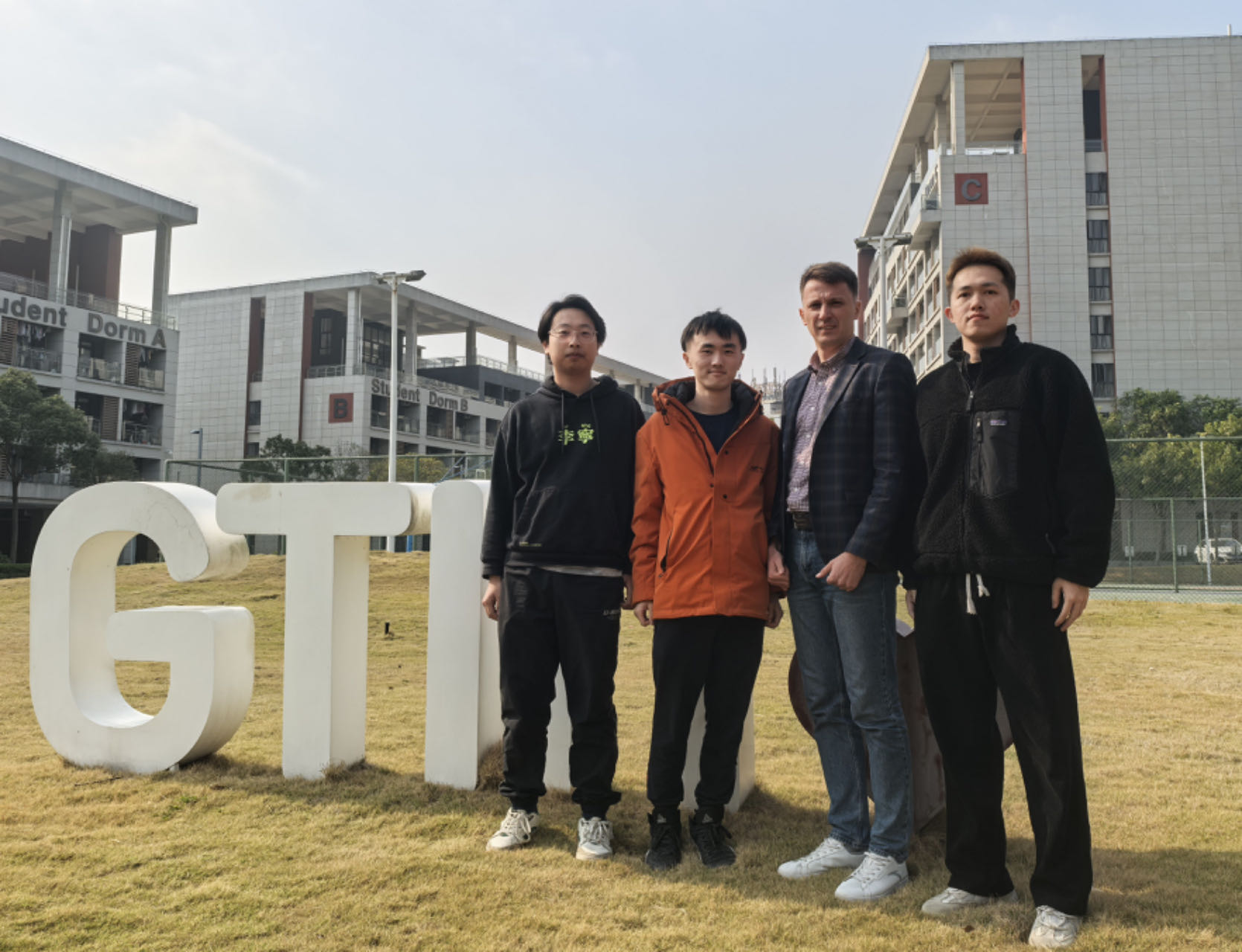
"This project gave me a concrete experience of scientific research," said Boyan. Rounds of problems and solutions brought him a broader understanding of scientific research. "From ideas to results, there are always some moments that make me feel that I have to give up. However, when I find a solution, the sense of achievement is incomparable." He added, keeping learning and forming a full understanding is necessary to face the unknowns in scientific research.
Paper Link:
https://www.sciencedirect.com/science/article/pii/S0142727X24004508
GTIIT
Under the integrated "knowledge triangle" model that converges innovation, research, and education, GTIIT encourages undergraduates to join professors' research teams by application. Through authentic research tasks, the students are expected to solidify their professional foundation and elevate their learning outcomes. By the end of 2024, GTIIT has seen over 200 undergraduates participate in or complete nearly 100 research projects under the guidance of their supervisors, showcasing the exemplary spirit of “Dream it. Do it.”through their rich innovative practices.
Text: GTIIT News & Public Affairs
Photos: provided by Dmitry
© GUANGDONG TECHNION-ISRAEL INSTITUTE OF TECHNOLOGY | 粤ICP备17036470号
